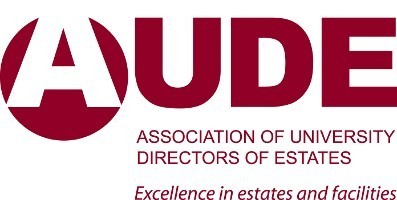Universities increase turnover via efficiency effectiveness agenda ...
Universities increase turnover via efficiency effectiveness agenda and business driven developments
Key stats
- University sector maintenance costs amount to £2bn a year
- Capital expenditure reaches a record high of £2.75bn per annum
- Student numbers remain constant despite decrease in home student numbers
- Brexit rocking significant risk to the higher education sector
- Universities continue to develop commercial agreements to increase income from non-traditional sources
The Association of University Directors of Estates (AUDE) annual report reveals the sector grew by £2bn in one year, despite a challenging funding environment and a decrease in home students. The annual turnover for the entire UK university sector now equates to £30bn overall.
The report titled ‘Higher Education Estates Statistics Report 2016’ spans the academic year 2014-2015, and details the evolving profile of the university estate in the UK. According to the report, income in the sector has increased across all areas, highlights include:
- The sector has a total income of £30 billion
- Teaching income has increased by 6% per annum
- Income from research has risen by 12%
- The university estate equates to 14.3 million square metres – more than 170 times the space of the Shard and an increase of 200,000 square metres since the previous year
Undergraduate student numbers are down by 700 students, research students increased by 10,000 and staff numbers increased by 2,000
The two largest institutions in the UK each turnover in excess of £1bn per annum
Capital expenditure is in excess of £2.75bn, a growth of 5.6% on last year Capital expenditure grew by 5.6% across the UK, driven by investment in the estate as the sector continues to improve its estate and facilities in the knowledge that staff and students expect high quality and attractive facilities.
The report also details how Brexit may present a significant risk to the HE sector; it is impossible to predict the level of impact although opportunities are also likely to emerge. Risks identified in the report includes recruitment of EU staff and students, rising construction costs, alongside changes to regional EU funding (EU research funding generates more than 19,000 jobs across the UK and £1.86bn for the UK economy. This equates to 14% of all UK income from research grants).
The report reveals University estates continue to expand. The university estate equates to 14,300 square metres – more than 170 times the space of the Shard and an increase of 200,000 square metres since the previous year. Individually, the universities of Manchester, Cambridge, Edinburgh, Oxford and Nottingham all have academic estates (i.e. excluding residential accommodation) in excess of 500,000 square metres.
Despite this growth and significant inflationary pressures (staff costs and construction price inflation), Total Property Costs have remained relatively level for the past six to seven years, moving from £95 to £98 per square metre, showing the sector’s continued commitment to driving efficiency.
For example, the University of Hertfordshire embarked on a strategy to boost income by securing commercial deals with businesses such as Ocado and Regus for office space, as well as commercial leases with bank Santander and the NHS which runs a GP clinic on campus. University’s income rose to £1,477 per square metre in 2014/15.
Across the sector, examples are documented in the report of universities exploiting its estate in order to secure alternative funding streams outside of traditional routes. The University of Sheffield built workshops, laboratories and office space in Catcliffe near the M1 in a business park. The capital expenditure in Sheffield Business Park will deliver 4,000 jobs and generate over £210m per annum to the regional economy when fully developed.
Driving efficiency, reducing costs, improving the estate, raising service levels and increasing the commercial income from the estate remain key areas of focus for estate directors.
Association of University Directors of Estates (AUDE) Chair Trevor Humphreys, Director of Estates and Facilities, at the University of Surrey commented: “Universities have been through a period of significant upheaval and the sector should be commended on its robust management and efficiency strategies, which continue to serve it well. However, the future remains uncertain as we try to plan for the impact of the HE White Paper currently going through Parliament. Brexit is also likely to affect our student demographic, our workforce, our costs, as well as research funding.”
Sir Ian Diamond, Principal and Vice-Chancellor of the University of Aberdeen, comments: “Despite this period of policy upheaval one thing remains clear; UK universities continue to deliver world-class education, undertake world-class and impactful research and engage with communities in a multitude of exciting ways.
“A real feature of the evolution of the higher education estate in recent years has been how the local community is able to use the estate, or in which developments are a part of the community. Imaginatively developed facilities can support and enhance higher education’s contribution to the economy and to society. But in this landscape, there is no room for complacency.”
George Griffith, Global Workplace Solutions at CBRE who was involved in authoring the report, states: “Providing the right environment is crucial to attracting staff and students both from the UK and internationally and hence contributing to the success of the sector nationally. This is why at CBRE we recognise the importance of providing a holistic real estate offering of the highest calibre for the sector.”











